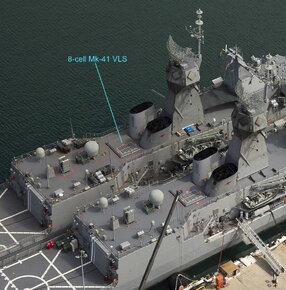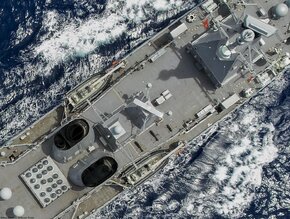Rob: in agreement with you that a nation must at the very least be able to defend its own territory (after all that's the history of mankind and civilizations) plus the rest of your commentary. The only variation I would add is I do think though that we must also have certain useful capabilities that can forward-deploy as part of the baseline. Like how we forward deployed the Services into the SW Pacific in WW2 (including maritime patrol to keep a lookout of our approaches).
Granted, it was a contribution to the allied effort (i.e. Australia and the Admiralty etc) and particularly when the US joined the Pacific war and "island-hopped" their way through Polynesia/NZ into Melanesia and Micronesia then beyond (and ditto from the Australian mainland into New Guinea and beyond, plus with the USN projecting across the oceans etc. Today (in this part of the Pacific region), although the same issues of distance and logistics are applicable, the difference is the US is well established (and resourced) at the likes of Guam and increasing its presence in Australia.
So to keep things short my point is, whilst NZ can (somewhat) contribute to these US/Aust efforts (such as FFH/AOR/SF/P-8 etc) realistically numbers wise they will be small, I wonder whether from an allied perspective NZ may be better perceived/tasked to expend reasonable efforts by forward-basing assets in "flank" but none-the-less still "important" areas for example Fiji, or New Caledonia (with the French), eastern Polynesia (and the Southern ocean) to monitor surface, underwater and potentially airborne threats (eg long range UAV, perhaps ship launched) to these (wider) allied approaches?
Particulary adversary subs and gray zone vessels. Whilst in wartime civilian/merchant vessels will head to safe ports (or for some, continue to trade carrying critical cargos eg energy, food, resources and warstocks, requiring escorting/protection where practical etc), the reality is there will potentially be hundreds and hundreds of 'adversary" "fishing/cargo" gray zone vessels, some potentially with surface launched airborne survellience (and attack) aerial craft (and how long before adversary subs are fitted out with UAV's, perhaps silo launched to eliminate the need to surface and launch them, if not already?). Allied effort will be neeed to track (and respond) to such vessels. With added complications with these potential adversaries being associated with (under the guise of "trading" with) neutral nations, like in Central/South America for example, and seeking "innocent" passage/protection in those confines.
So whilst trying to avoid "fantasy fleet" type thoughts, suggest we add certain new/refreshed capabiities to enhance the Defence of the Realm strategy. For now that could simply be adding containerised underwater ISR/UUV kit to the OPV's and perhaps forward basing them in Fiji and Raratonga etc (and this may better inform the requirements for their replacements in the 2030's)? Kind of like how the RN forward deploy their
River B2's into the Indo-Pacific and with the RAN's
Arafura class OPV's being commissioned perhaps it could be part of a wider allied strategy/interoperability plan etc. Or a couple more P-8's that could forward base to
Nandi? Or perhaps a few new
CN-295 configured for MPA/ASW & ELINT forward basing them in the sub-tropics (thus freeing up the P-8's for allied front-line contributions etc)? I think it isn't unreasonable for us to do a bit more at a practical level (if not a lot better).





